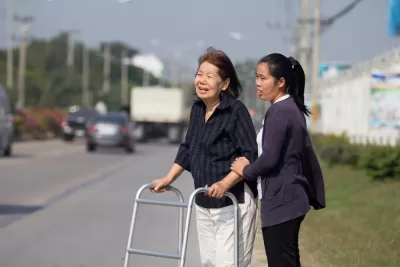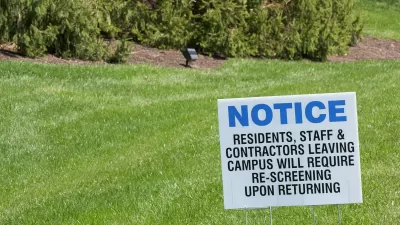Less dense communities provide specific challenges in providing services to residents in need of extra care. More seniors living in suburban and rural communities will require new and scalable solutions.

Laura Maggi shares news of a new study from the Joint Center for Housing Studies of Harvard University that reveals the demographics of aging in the United States.
A key finding from the study: "A growing number of older people are living in suburban or rural areas that are less likely to have the kind of services needed to help people stay in their own homes as they age, a new report found."
More specifically: "The share of adults who are 65 or older living in low-density metro census tracts increased by more than 6 million people from 2000 to 2016….That is about 15 million people, with another 8 million living in non-metropolitan area neighborhoods."
The report suggests that communities must act now to begin filling the gaps in services required by aging populations. There are existing models to copy, as well. "For example, the CAPABLE program developed by the Johns Hopkins School of Nursing is aimed at helping lower-income seniors age in place. The program teams up a nurse, occupational therapist and handyman, who make home visits over four months to figure out how people can safely remain in their own homes," writes Maggi.
FULL STORY: A Growing Need for Aging-in-Place Services in Suburbs and Rural Areas

Planetizen Federal Action Tracker
A weekly monitor of how Trump’s orders and actions are impacting planners and planning in America.

San Francisco's School District Spent $105M To Build Affordable Housing for Teachers — And That's Just the Beginning
SFUSD joins a growing list of school districts using their land holdings to address housing affordability challenges faced by their own employees.

The Tiny, Adorable $7,000 Car Turning Japan Onto EVs
The single seat Mibot charges from a regular plug as quickly as an iPad, and is about half the price of an average EV.

San Diego Votes to Rein in “Towering” ADUs
City council voted to limit the number of units in accessory buildings to six — after confronting backyard developments of up to 100 units behind a single family home.

Texas Legislature’s Surprising Pro-Housing Swing
Smaller homes on smaller lots, office to apartment conversions, and 40% less say for NIMBYs, vote state lawmakers.

Even Edmonton Wants Single Staircase Buildings
Canada's second most affordable major city joins those angling to nix the requirement for two staircases in multi-family buildings.
Urban Design for Planners 1: Software Tools
This six-course series explores essential urban design concepts using open source software and equips planners with the tools they need to participate fully in the urban design process.
Planning for Universal Design
Learn the tools for implementing Universal Design in planning regulations.
Borough of Carlisle
Smith Gee Studio
City of Camden Redevelopment Agency
City of Astoria
Transportation Research & Education Center (TREC) at Portland State University
City of Camden Redevelopment Agency
Municipality of Princeton (NJ)





























